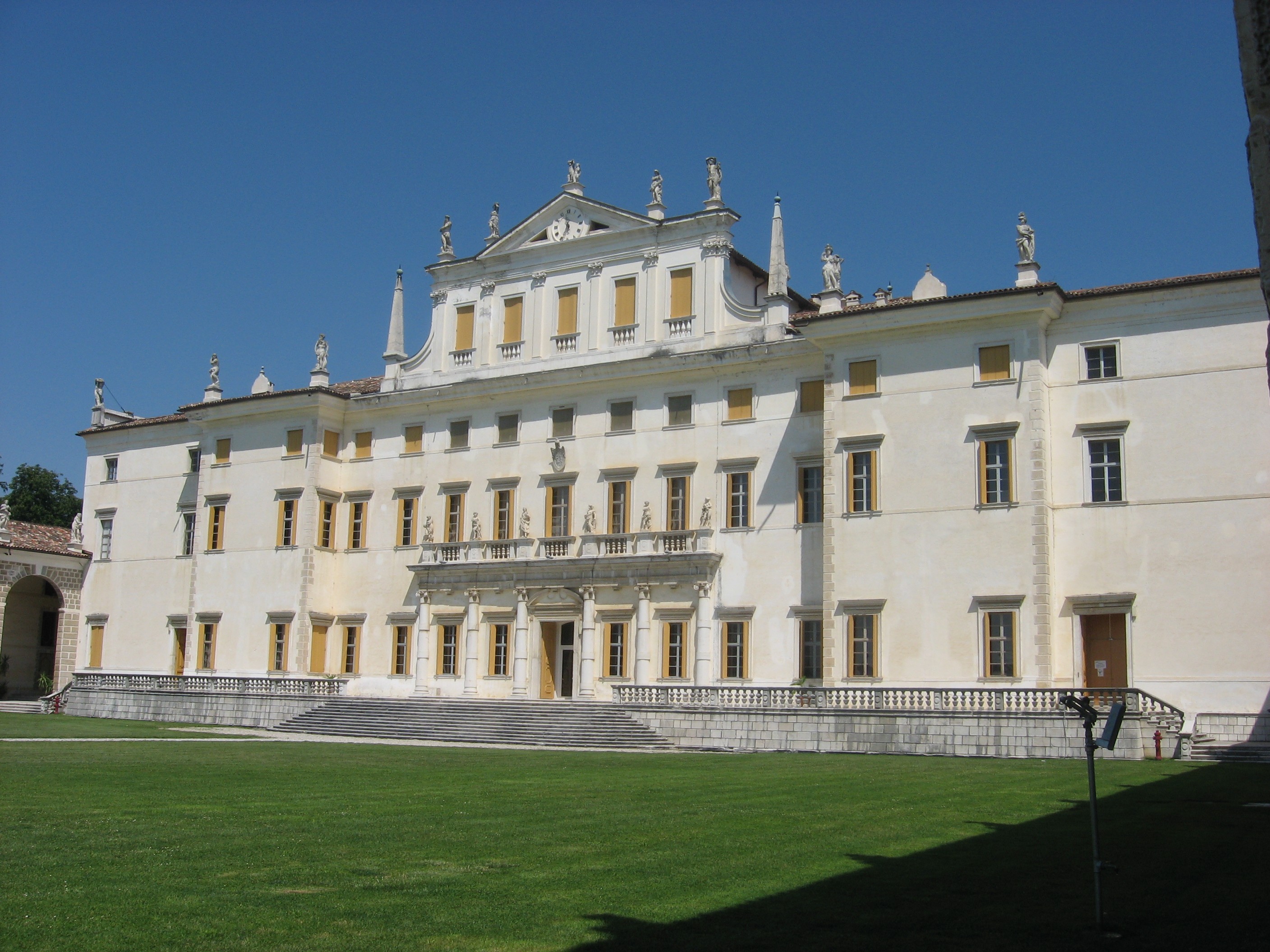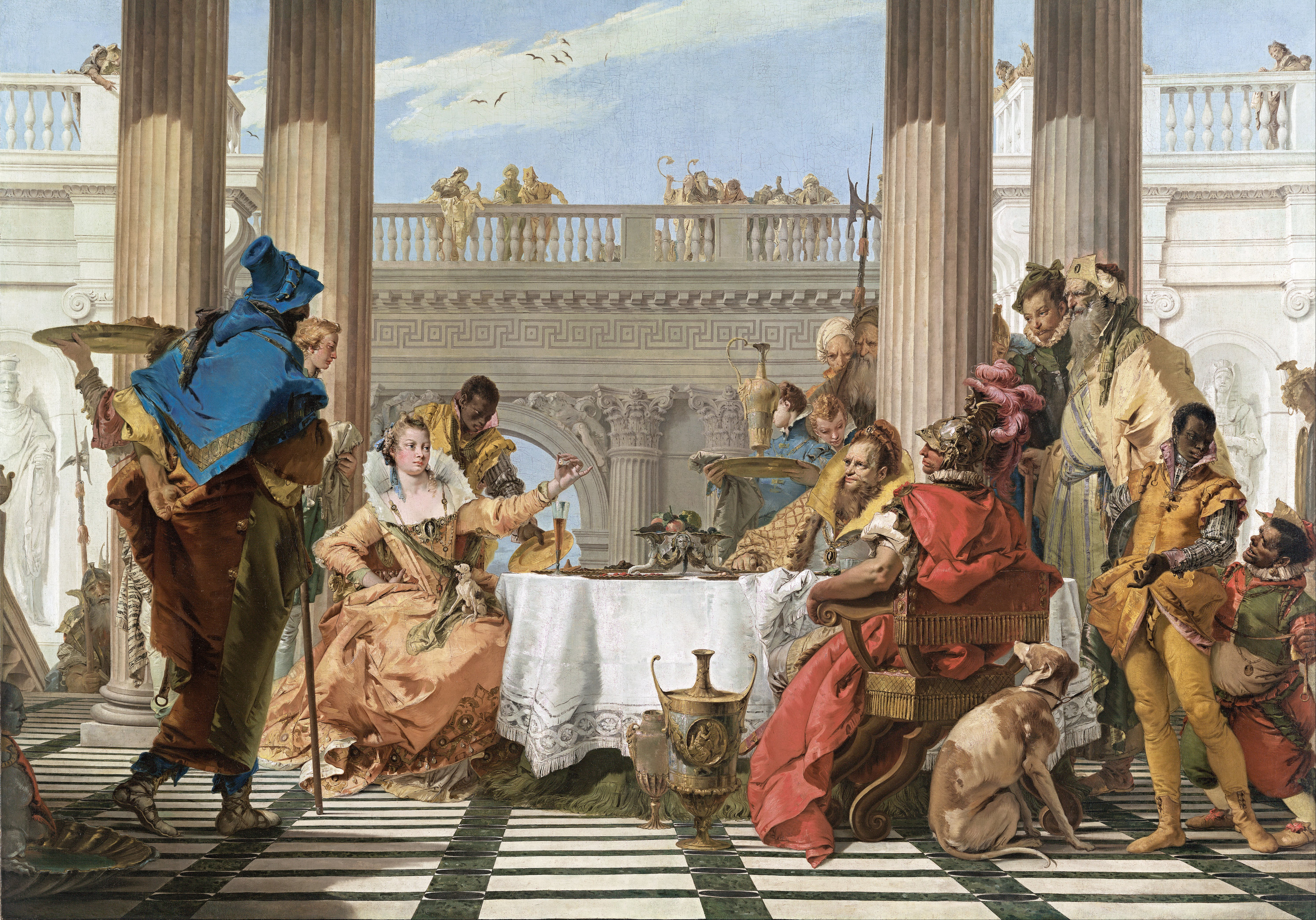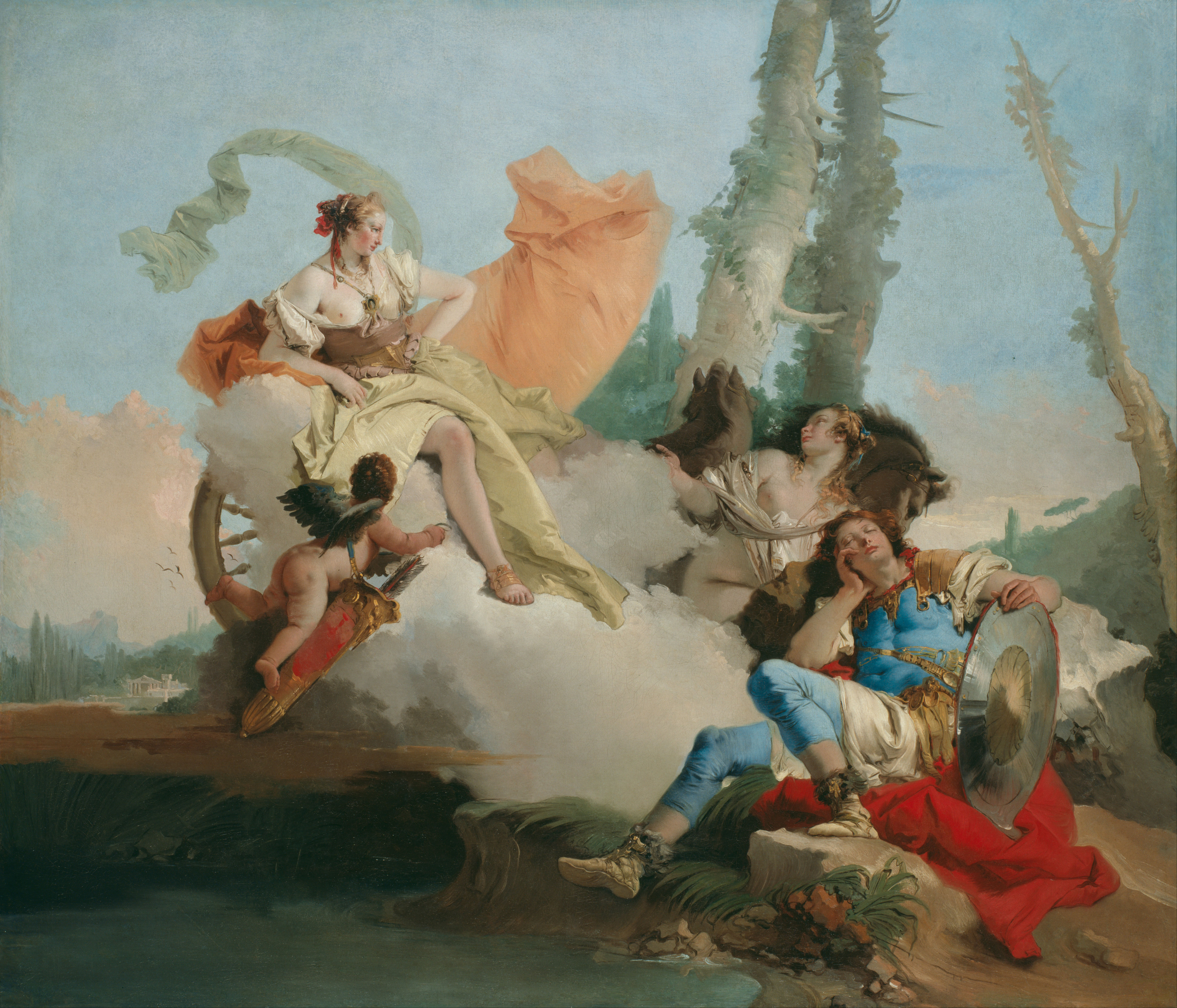|
Santa Maria Di Nazareth (Venice)
Santa Maria di Nazareth is a Roman Catholic Carmelite church in Venice, northern Italy. It is also called Church of the Scalzi () being the seat in the city of the Discalced Carmelites religious order ( in Italian means 'barefoot'). Located in the sestiere of Cannaregio, near Venezia Santa Lucia railway station, it was built in the mid-17th century to the designs of Baldassarre Longhena and completed in the last decades of that century. Exterior The facade in Venetian Late Baroque style, was financed by the aristocrat Gerolamo Cavazza, and erected by Giuseppe Sardi, from 1672 to 1680. The four first-floor statues, the statue of the Virgin and Child, and the statues of Saint Catherine of Siena and St Thomas Aquinas are sculpted by Bernardo Falconi. Santa Maria degli Scalzi (Venice) - San Bartolomeo (apostolo) di Bernardo Falconi.jpg, Bartholomew the Apostle by Bernardo Falconi Campanile of Santa Maria di Nazareth (Venezia).jpg, Campanile Interior The first chapel to the right ... [...More Info...] [...Related Items...] OR: [Wikipedia] [Google] [Baidu] |
Venice
Venice ( ; it, Venezia ; vec, Venesia or ) is a city in northeastern Italy and the capital of the Veneto Regions of Italy, region. It is built on a group of 118 small islands that are separated by canals and linked by over 400 bridges. The islands are in the shallow Venetian Lagoon, an enclosed bay lying between the mouths of the Po River, Po and the Piave River, Piave rivers (more exactly between the Brenta (river), Brenta and the Sile (river), Sile). In 2020, around 258,685 people resided in greater Venice or the ''Comune di Venezia'', of whom around 55,000 live in the historical island city of Venice (''centro storico'') and the rest on the mainland (''terraferma''). Together with the cities of Padua, Italy, Padua and Treviso, Italy, Treviso, Venice is included in the Padua-Treviso-Venice Metropolitan Area (PATREVE), which is considered a statistical metropolitan area, with a total population of 2.6 million. The name is derived from the ancient Adri ... [...More Info...] [...Related Items...] OR: [Wikipedia] [Google] [Baidu] |
Gallerie Dell'Accademia
The Gallerie dell'Accademia is a museum gallery of pre-19th-century art in Venice, northern Italy. It is housed in the Scuola della Carità on the south bank of the Grand Canal, within the sestiere of Dorsoduro. It was originally the gallery of the Accademia di Belle Arti di Venezia, the art academy of Venice, from which it became independent in 1879, and for which the Ponte dell'Accademia and the Accademia boat landing station for the ''vaporetto'' water bus are named. The two institutions remained in the same building until 2004, when the art school moved to the Ospedale degli Incurabili. History Early history The Accademia di Belle Arti di Venezia was founded on 24 September 1750; the statute dates from 1756.Accademia di belle arti di Venezia, 1750–2010. Cenni storici (in Italian). A ... [...More Info...] [...Related Items...] OR: [Wikipedia] [Google] [Baidu] |
Roman Catholic Churches In Venice
Roman or Romans most often refers to: *Rome, the capital city of Italy *Ancient Rome, Roman civilization from 8th century BC to 5th century AD *Roman people, the people of ancient Rome *''Epistle to the Romans'', shortened to ''Romans'', a letter in the New Testament of the Christian Bible Roman or Romans may also refer to: Arts and entertainment Music * Romans (band), a Japanese pop group * ''Roman'' (album), by Sound Horizon, 2006 * ''Roman'' (EP), by Teen Top, 2011 *" Roman (My Dear Boy)", a 2004 single by Morning Musume Film and television *Film Roman, an American animation studio * ''Roman'' (film), a 2006 American suspense-horror film * ''Romans'' (2013 film), an Indian Malayalam comedy film * ''Romans'' (2017 film), a British drama film * ''The Romans'' (''Doctor Who''), a serial in British TV series People *Roman (given name), a given name, including a list of people and fictional characters *Roman (surname), including a list of people named Roman or Romans *Ῥωμα� ... [...More Info...] [...Related Items...] OR: [Wikipedia] [Google] [Baidu] |
Doge Of Venice
The Doge of Venice ( ; vec, Doxe de Venexia ; it, Doge di Venezia ; all derived from Latin ', "military leader"), sometimes translated as Duke (compare the Italian '), was the chief magistrate and leader of the Republic of Venice between 726 and 1797. Doges of Venice were elected for life by the Venetian nobility. The ''doge'' was neither a duke in the modern sense, nor the equivalent of a nobility, hereditary duke. The title "doge" was the title of the senior-most elected official of Republic of Venice, Venice and Republic of Genoa, Genoa; both cities were republics and elected doges. A doge was referred to variously by the titles "My Lord the Doge" ('), "Most Serene Prince" ('), and "Serene Highness, His Serenity" ('). History of the title Byzantine era The office of doge goes back to 697. The first historical Venetian doge, Orso Ipato, Ursus, led a revolt against the Byzantine Empire in 726, but was soon recognised as the () and (a honorific title derived from the Greek w ... [...More Info...] [...Related Items...] OR: [Wikipedia] [Google] [Baidu] |
Giovanni Maria Morlaiter
Giovanni Maria Morlaiter (15 February 1699 – 22 February 1781) was an Italian sculptor of the Rococo or late-Baroque, active mainly in his native Venice. Biography Almost all the sculpture in the church of the Gesuati, Venice is the work of Morlaiter, whom Hugh Honour describes as "one of the ablest sculptors in eighteenth century Venice" and Semenzato as "the most brilliant interpreter of the rococo in Venetian sculpture" adding that "His work shows great dynamism" and "an inexhaustible felicity of invention". There is more of his work in the church than anywhere else in Venice.Semenzato pp.62-3 His first work for the church was the ''Glory of Angels'' (1738) on the second altar on the right, and after this Massari engaged him for all the other principal works of sculpture, ending with the statue of Melchisedek (1755). Clockwise from the entrance, the statues in six niches and coupled bas reliefs above are: ''Abraham'' (1754) and ''Jesus and the Centurion'' (1754); ''Aaron'' ... [...More Info...] [...Related Items...] OR: [Wikipedia] [Google] [Baidu] |
Sebastiano Venier
Sebastiano Venier (or Veniero) (c. 1496 – 3 March 1578) was Doge of Venice from 11 June 1577 to 3 March 1578. He is best remembered in his role as the Venetian admiral at the Battle of Lepanto. Biography Venier was born in Venice around 1496. He was a son of Moisè (Mosè) Venier and Elena Donà, and a nephew of Zuan Francesco Venier, Co-Lord of Cerigo. He was a paternal grandson of Moisé Venier (ca. 1412 - ca. 1476). He was the great-great-great-grandson of Pietro Venier, Governor of Cerigo. He worked as a lawyer from a very early age, though without holding formal qualifications, and subsequently was an administrator for the government of the Republic of Venice. In 1570 he was procurator of St Mark's and, in the December of the same year, '' capitano generale da Mar'' of the Venetian fleet in the new war against the Ottoman Turks, substituting Girolamo Zane. He was the commander of the Venetian contingent at Battle of Lepanto (7 October 1571), in which the Christian Leagu ... [...More Info...] [...Related Items...] OR: [Wikipedia] [Google] [Baidu] |
Giuseppe Torretto
Giuseppe Torretto or Torretti (1661 in Pagnano – 1743 in Venice) was an Italian sculptor of statues and intaglios. Mainly working in Venice, statues by him can be found in the churches of Santa Maria Formosa, I Gesuiti, Santa Maria di Nazareth and San Stae among others. The side walls of the Manin Chapel at Udine have stone high-reliefs by him showing scenes from the life of the Blessed Virgin Mary.''Venice:guide to sculpture from the origins to the 20th century'' by Renzo Salvadori, Toto Bergamo Ross "Giuseppe Torretto also did the bas-relief with the Descent from the Cross on the antependium of the high altar and the marble Crucifix in the Foscarini chapel (on the left)"./ref> He also founded a notable studio, which was kept going after his death by his grandchildren Giuseppe Bernardi and Giovanni Ferrari, whose students included Antonio Canova. Angeli Giuseppe Torretti San Stae.jpg, Angels by Giuseppe Torretti on the facade of San Stae church in Venice Ca' Rezzonico - ... [...More Info...] [...Related Items...] OR: [Wikipedia] [Google] [Baidu] |
Ludovico Manin
Ludovico Giovanni Manin (; ; 14 May 1725 – 24 October 1802) was a Venetian politician, Venetian nobility, patrician, and the List of Doges of Venice, 120th and last Doge of Venice. He governed the Venetian Republic from 9 March 1789 until its Fall of the Republic of Venice, fall in 1797, when he was forced to Abdication, abdicate by Napoleon I of France, Napoleon Bonaparte. Biography Early life Lodovico Manin was the eldest of five sons of Lodovico III Alvise (1695–1775) and Lucrezia Maria Basadonna, the great-granddaughter of Cardinal (Catholicism), cardinal Pietro Basadonna. He attended the University of Bologna and was a boarder at the noble College of St. Xavier. Manin printed propositions of natural law, which he studied during this period. When Manin began public life he was quickly noticed for his generosity, honesty, kindness, and wealth. He married Elisabetta Grimani (d 1792) on 14 September 1748; she bore him a dowry of 45,000 ducats. Elisabetta had been educated ... [...More Info...] [...Related Items...] OR: [Wikipedia] [Google] [Baidu] |
Niccolò Bambini
Niccolò Bambini (1651–1736) was an Italian painter of the late-Renaissance and early-Baroque periods. Biography He was born in Venice in 1651, and first studied under Giulio Mazzoni at Venice. To this period belong the ceiling of the church of S. Moisè, in a poor state of preservation, and an ''Allegory of Venice'' in the hall of the Four Doors of the ducal Palace. Later went to Rome, where he became a pupil of Carlo Maratti. On his return to his homeland, seeing that the whole world was running after the paintings of Liberi, he also followed that beautiful way of painting. An example of his imitations from Liberi is the allegorical ceiling of Ca 'Pesaro (1682). While ''The Nativity of the Virgin'' in the church of San Stefano, according to Zanetti, was "conducted following the style of the art school of Rome". However, this painting of porcelain colors and pungent design, however, represented an isolated case. Usually Roman memories are reduced in his paintings to some gen ... [...More Info...] [...Related Items...] OR: [Wikipedia] [Google] [Baidu] |
Giovanni Batista Tiepolo
Giovanni Battista Tiepolo ( , ; March 5, 1696 – March 27, 1770), also known as Giambattista (or Gianbattista) Tiepolo, was an Italian painter and printmaker from the Republic of Venice who painted in the Rococo style, considered an important member of the 18th-century Venetian school. He was prolific, and worked not only in Italy, but also in Germany and Spain. Giovan Battista Tiepolo, together with Giambattista Pittoni, Canaletto, Giovan Battista Piazzetta, Giuseppe Maria Crespi, and Francesco Guardi are considered the traditional Old Masters of that period. Successful from the beginning of his career, he has been described by Michael Levey as "the greatest decorative painter of eighteenth-century Europe, as well as its most able craftsman." Biography ''The Glory of St. Dominic'', 1723 Early life (1696–1726) Born in Venice, he was the youngest of six children of Domenico and Orsetta Tiepolo. His father was a small shipping merchant who belonged to a family tha ... [...More Info...] [...Related Items...] OR: [Wikipedia] [Google] [Baidu] |
Heinrich Meyring
Heinrich Meyring/ Heinrich Meiering (1628 – 11 February 1723) was a German sculptor, active mainly in Venice and the Veneto. He is also known as ''Enrico Merengo'' or ''Arrigo Merengo''. Meyring was born in Rheine, Westphalia. He is considered one of the main pupils of the Flemish sculptor (active in Venice) Josse de Corte 250px, ''Queen of Heaven expelling the Plague'', Main altar, Salute Josse de Corte (1627–1679) was a Baroque Flemish sculptor, born in Ypres, but mainly active in Venice after 1657. History He is also known as ''Giusto Le Court'' ''Giusto Co ... (or Giusto Le Court). Meyring appears to be active in Venice from 1679 to 1714. The statues of ''Annunciation'' in Santa Maria del Giglio are by Meyring. Further reading * Reinhard Karrenbrock, ''Zwei Generationen westfälischer Bildhauer: Heinrich Meiering - Bernd Meiering''. Stiftung Museumsdorf Cloppenburg 1992. Sources Dissertation by Silvia Wolff 1628 births 1723 deaths 17th-century Germa ... [...More Info...] [...Related Items...] OR: [Wikipedia] [Google] [Baidu] |
Giovanni Battista Tiepolo
Giovanni Battista Tiepolo ( , ; March 5, 1696 – March 27, 1770), also known as Giambattista (or Gianbattista) Tiepolo, was an Italian painter and printmaker from the Republic of Venice who painted in the Rococo style, considered an important member of the 18th-century Venetian school. He was prolific, and worked not only in Italy, but also in Germany and Spain. Giovan Battista Tiepolo, together with Giambattista Pittoni, Canaletto, Giovan Battista Piazzetta, Giuseppe Maria Crespi, and Francesco Guardi are considered the traditional Old Masters of that period. Successful from the beginning of his career, he has been described by Michael Levey as "the greatest decorative painter of eighteenth-century Europe, as well as its most able craftsman." Biography ''The Glory of St. Dominic'', 1723 Early life (1696–1726) Born in Venice, he was the youngest of six children of Domenico and Orsetta Tiepolo. His father was a small shipping merchant who belonged to a family th ... [...More Info...] [...Related Items...] OR: [Wikipedia] [Google] [Baidu] |
.jpg)



